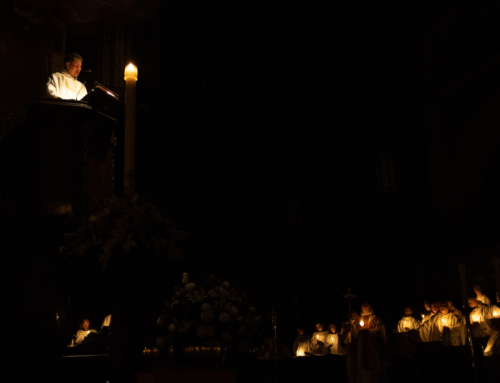The Disney film adaption of Peter Pan ends (unsurprisingly) happily-ever-after. Gathered before the nursery window in a loving embrace, the Darling family fondly watches Peter and Tinkerbell fly their golden, pixie-enchanted ship through the moonlit clouds to Neverland. In the background, a 1950s chorus croons the reprise to “You Can Fly”:
When there’s a smile in your heart
There’s no better time to start
Think of all the joy you’ll find
When you leave the world behind
And bid your cares goodbye
You can fly! You can fly! You can fly!
The final chapter of the novel is quite different. It takes place years after the conclusion of the Darling children’s adventures in Neverland. Wendy, now all grown up, sees Peter come to take her little daughter Jane off to Neverland, as once happened to her when she was a child. Wendy, tearful and afraid of losing her daughter, longs to go with them, but of course she can’t. Like all grown-ups, she has forgotten how to fly. Grown-ups forget how “because they are no longer gay and innocent and heartless. It is only the gay and innocent and heartless who can fly.” So, as Peter leads Jane far from London, skimming across the city’s skyline, Wendy stays behind alone and sorrowfully watches their small shapes recede into the night.
Years pass, and Jane too grows up and has a daughter, Margaret. Again, the ever-youthful Peter comes, and he takes the child to be his own new mother in a place where Jane can’t follow. But soon, Margaret will also grow old, and Peter will come to take away her child. The book ends with the unsettling statement: “and so it will go on, so long as children are gay and innocent and heartless.”
How are children heartless? The author of this book may have meant that children are “lacking understanding” (according to an older usage) or even “cruel.” However, perhaps Wendy’s motherly tears point to another meaning for this word. In this sense, children are “heartless” not because they’re unloving but because they’re lovable. Love is only satisfied with eternity—there’s no time limit for a mother’s love for her daughter. But time flies, and all children (except one) grow up. Just as Peter continues to come and steal children away to Neverland, so time leads the people we love far away from us. The “heartlessness” of children (or of any loved one) is that they are lovable, but also able to be taken away. It is the heartlessness of relentlessly moving time, the cold fact of separation and absence, that moves Wendy to grief as she watches Peter take her young daughter off to Neverland.
Unlike the idyllic (and delightful) portrait that the animated movie presents, this darker ending strikes a more existential note, echoing Qoheleth’s chorus: “Vanity of vanities, all things are vanity! … One generation departs and another generation comes, but the world forever stays” (Eccl 1:1–4). During Lent, the Church reminds us of this, that our life is fleeting. On Ash Wednesday, our faces are marked with a sign of our coming death: “Remember, you are dust and to dust you shall return.” It’s troubling to see this mark on the people we love—black streaks of ash imposed over warm, familiar faces. There’s something not right, something heartless, about it. How can these people who seem so alive, so real, so permanent, be passing away like everything else? This unsettling awareness of death is echoed in the Lenten chant, Media vita: “In the midst of life, we are in death; whom may we seek for help but you, O Lord?”
The thought of death urges us to turn to God, who is the Undying One, God who is Love. While all others are fragile, He is a Rock; though the whole world passes away, He is Eternal; even if our loved ones are taken from us, His promise remains: “I am with you always, to the end of the age” (Mt. 28:20). During this time of preparation for Easter, Holy Mother Church wants to shatter any false notion of “happily-ever-after” that we might have, so that we can set our hearts on the One who is the Truth and the Life.
God’s promise of love is a sure foundation upon which we can root the love we have for friends and family. With the eyes of faith, we can see that past the ashes of death rests a seal of eternal love: the invisible seal given at baptism. This mark is a pledge of future glory, a promise of the communion of saints in heaven, where, together, the blessed “shall see his face, and his name shall be on their foreheads. And night shall be no more; they need no light of lamp or sun, for the Lord God will be their light, and they shall reign for ever and ever” (Rev. 22:4–5).
✠
Image: Fr. Lawrence Lew, O.P., Ashes from Palms.







